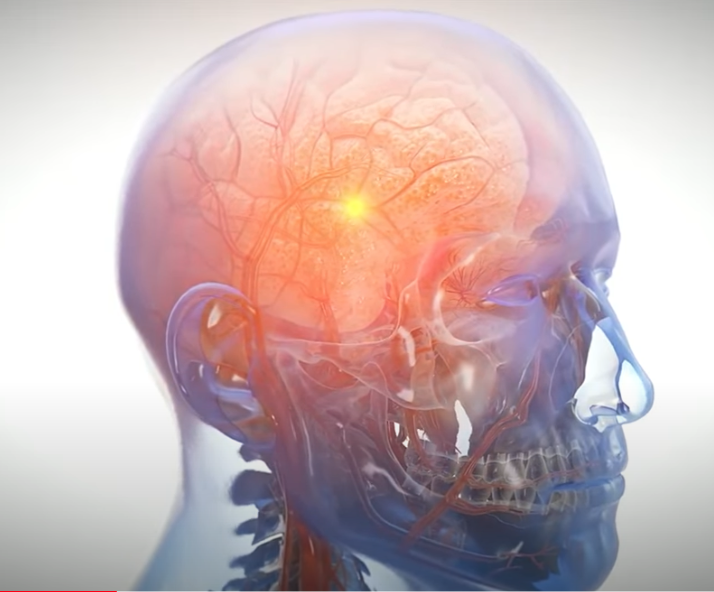What is Gadolinium
Gadolinium is a rare earth metal that has magnetic properties. While it is a naturally occurring metal, it does not occur naturally in the human body. Gadolinium belongs to a classifications of metals that are called Lanthanides. Lanthanides have a propensity toward bone, and have a tendency to deposit in the bone when introduced into the human body. Gadolinium has paramagnetic properties which has led to its use in contrast agents in magnetic resonance imaging such as MRIs and MRAs. There is no known native biological role for gadolinium.
MRIs and Gadolinium
Magnetic resonance imaging, or MRI, is a radiological medical imaging technique which uses magnets and magnetic fields to form images of the inside of the body. MRIs are widely used in hospitals and medical clinics to diagnose diseases, determine the stages of diseases, or for follow up imaging. MRI contrast dyes or contrast agents are sometimes used to create further detail in the image produced by the MRI. Because of gadolinium’s paramagnetic properties, it has been used in MRI and MRA contrast agents since the early 1980’s. Gadolinium-based contrast agents use a form of gadolinium that has been bound, or chelated, to another molecule because gadolinium in its free state is toxic.
Gadolinium-based contrast agents are often administered intravenously to patients who are undergoing an MRI or MRA. The use of gadolinium-based contrast agents enhances visibility of soft tissues, abnormalities, and diseases including cancer in MRIs and MRAs. The gadolinium in these contrast agents is meant to be filtered out of the body through the kidneys after the MRI. Research shows however, that certain types of gadolinium based MRI contrast dyes can be retained in the body. This retention of gadolinium in the body can lead to a number of different medical conditions.
Gadolinium Toxicity
Recent studies have shown that after having MRIs or MRAs with a gadolinium-based contrast agent, the gadolinium can accumulate and deposit in the body. Specifically, gadolinium deposits have been found in the brain, skin, bone, as well as other tissues in the body. This retention of gadolinium in the body can lead to gadolinium storage condition, gadolinium deposition disease, and nephrogenic systemic fibrosis.
The accumulation of gadolinium in the body can also lead individuals to experience gadolinium toxicity symptoms such as:
- Persistent headaches
- Brain fog
- Burning sensation or pain in the arms or legs
- Tightness of hands and feet
- Bone and joint pain
- Change in skin appearance/texture
Gadolinium Testing
Unfortunately, there are currently no known ways to determine whether an individual is suffering from gadolinium toxicity. This means that there is no diagnostic technique that can determine that symptoms are caused by gadolinium toxicity. The scientific and medical communities are only scratching the surface on the problems associated with gadolinium-based contrast agents, and diagnostic techniques are, hopefully, not far off.
There are, however, tests which can tell an individual whether or not they have gadolinium being retained in their body. Urine, hair or blood tests can be obtained which will identify whether there is gadolinium is being retained in the body. Additionally, for individuals experiencing skin issues consistent with gadolinium toxicity, biopsies of the affected tissue can determine whether gadolinium is present in the skin.
If you are interesting in testing for gadolinium in your body, you should speak with your doctor to determine the best course of medical testing.
Gena Norris and Gadolinium Side Effects
Gena Norris and her husband, actor Chuck Norris, have sued the manufacturers and distributors of gadolinium-based MRI contrast agents. Ms. Norris’ lawsuit claims that she underwent a series of three MRIs in a one week period, after which she was never the same. Following these MRIs, in which a gadolinium-based contrast agent was administered, Ms. Norris began experiencing pain and burning throughout her body, violent shaking, weakness, and tingling and numbness over her body. She also experienced decreased cognitive abilities. The Norris’ lawsuit alleges that the manufacturer of the gadolinium based contrast agent, Bracco S.p.A., and the California based distributor, McKesson Corp., new about these risks, but failed to warn the public and medical community. Ms. Norris claims that had she known of these risks prior to undergoing the MRIs, she would not have used the contrast agent. The Norris’s hope is that through their experience and lawsuit, they can raise awareness about MRI contrast dye risks and gadolinium toxicity.
Gadolinium Poisoning Attorney
At this time, there have been gadolinium toxicity lawsuits filed against the manufacturers of gadolinium based contrast agents in both state and federal courts. If you or a loved one has had an MRI or MRI in which a gadolinium-based contrast agent was administered, and are experiencing symptoms of gadolinium poisoning, you may have legal options. Please give us a call at (619) 237-3490 to discuss your potential options. Our gadolinium attorneys are reviewing potential cases involving gadolinium and gadolinium toxicity.







